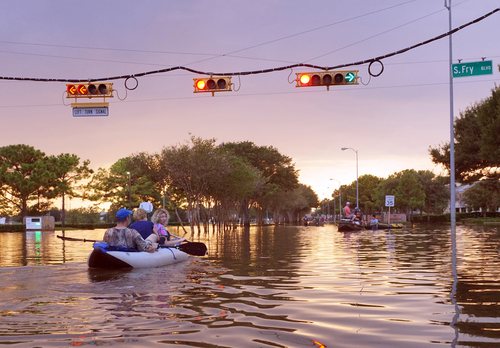
The United States’ ability to manage health emergencies has steadily improved over the last six years, according to a nationwide index of health security.
The 2019 National Health Security Preparedness Index, supported by the Robert Wood Johnson Foundation (RWJF), analyzes 129 different measures including the percentages of bridges that are in good condition, the number of nursing homes that are prepared for hazards, and the number of paramedics and medical volunteers, among additional factors. Index scores indicate the ability to protect the health security of Americans from newly emerging infectious diseases, terrorism, and extreme weather conditions.
Although improvement in preparedness rose 11.7 percent since the index began in 2013, experts suggest it will take 10 additional years to reach the strongest level of health security.
“We are seeing some promising national numbers when it comes to our nation’s ability to cope with health emergencies,” said Alonzo Plough, chief science officer at RWJF. “Disasters like recent major hurricanes show that to take the next step in increasing our preparedness levels, we must focus on improving equity within our efforts.”
A total of 11 states and the District of Columbia had health security levels that were significantly above the national average in 2018, down from 22 jurisdictions a year earlier. Conversely, 17 states had health security levels that fell significantly below the national average, down from 20 states.
Glen Mays leads a team of researchers at the University of Kentucky in developing the index and says every state is a little different compared to its strengths and weaknesses. West Virginia, Michigan, Idaho, and Maine were the only states that saw a reduction in the overall health security level during the past year.
“For West Virginia, it was primarily losses in surveillance capabilities, particularly their public health testing and laboratory capabilities to be able to test for certain kinds of hazards and pathogens,” Mays said in an interview. “A couple of the other states saw declines in the health care delivery system preparedness.”
Ambulance rides are included in the analysis of healthcare delivery systems and researchers found that there were longer response times, especially in urban areas. Mays says a growing number of cities have difficultly financing the expansion of emergency medical services, compounded by the fact that many EMS are addressing non-emergency situations.
States scoring at the top of the index were Massachusetts, Nebraska, Rhode Island, Maryland, and the District of Columbia. These high rankings are a result of strong coalitions engaged in community planning with multiple stakeholders. These community groups have increasing levels of collaboration among medical care and public health professionals.
“These organizations are highly connected,” Mays said. “There’s no substitute for that connectivity for being ready for emergencies.”
Establishing that kind of network is difficult for states always reeling year after year from disasters. Mays says there’s a tradeoff between how states use resources in places that have been hard hit by disaster, such as California with the wildfires and the Gulf states with hurricanes. These regions must spend resources on response and recovery, which means they have fewer resources to invest in planning for the next disaster.
“States and communities have a responsibility to be prepared to respond to health emergencies, and to recover quickly from them,” said Nancy Messonnier, acting director of CDC’s Center for Preparedness and Response. “Having a comprehensive index helps states see where cross-sector investments and cooperation are paying off and where more effort is needed.”
Published in the index are policy recommendations. The researchers recommend federal resources should be targeted to states that are hardest hit. These resources shouldn’t be only monetary but must include technical assistance and peer support from neighboring states.
Federal dollars for preparedness have fallen flat over the last decade except for periodic spikes in supplemental funding for hurricanes and for special threats like Zika and Ebola.
“I think the federal government and state partners have gotten a lot smarter about how to allocate and use those funds and we’ve seen a lot of improvement about thinking about what capabilities to establish and strengthen,” Mays said. “The funding has become a bit more focused and intentional about how it’s being used.”
The index also makes recommendations about countermeasures such as getting a better vaccine distribution system in place.
“Given the threats that are on the horizon, such as novel diseases and the ever-present risk of bioterrorism, we need to deploy all the protections we have available,” Mays said.




